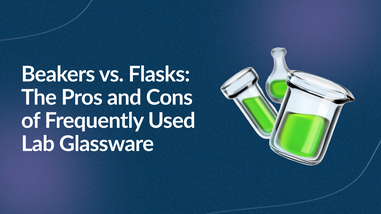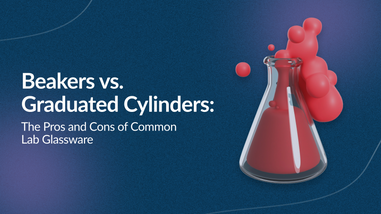- No products in the cart.
Every lab needs equipment for agitation and mixing samples. That’s where lab shakers, rockers, and rotators come into play. These three pieces of equipment are made up of an electric motor that initiates the movement of the platform where the sample is secured. The speed of the motor can be adjusted with a range from a gentle motion to a vigorous speed.
The various models have different designs and configurations. The different designs include benchtop, free-standing, and stackable. All of these are designed to accommodate vessels such as bottles, culture flasks, microplates, and tubes. They typically are featured with alarms, digital displays, and are programmable.

This equipment is used for a variety of applications. Some of these applications include mixing, suspending, or dissolving samples. They are also used in microbial and cell culture.
Here, we’ll go over each piece of lab equipment and point out the differences between a lab shaker, rocker, and rotator.
Shakers
Lab shakers are used to perform a shaking action of more than one ingredient so that it ends up as a homogenous mixture. The shaking action is the result of the plates either vibrating back and forth or in a circular motion. Some shakers have plates that perform an up or down or side to side tilt that aids in the mixing process.
Various shakers produce various movements. These movements include a rocker shaker, a linear shaker, circular shaker, twist shaker, dual motion reciprocal shaker, and a double stage shaker. There are also shakers suitable for cold rooms or cold incubators for work at 4℃, shakers designed to work in a CO2 incubator, shakers for heating, and shakers for blood bags. Shakers can be used with vessels such as dishes, bottles, flasks, microplates, and micro tubes.
What is an Orbital Shaker?
Two shakers to focus on are the rotary shaker and the orbital shaker. The orbital shaker provides a circular shaking motion with less vibration and with speeds ranging from low to high. Orbital shakers are ideal for washing, staining, suspension, bacterial growth, and cell culture.
What is a Rotary Shaker?
Rotary shakers revolve around an axis and perform like a centrifuge. The speed and angle of the rotation axis is adjustable which provides for precise control over the level of agitation. Rotary shakers are ideal for general mixing, blotting, hybridization, and for use in temperature controlled environments.
Shakers are used in many different applications. These applications include hybridization, washing procedures, de-staining, staining, bacterial suspension, diagnostic testing, extraction, solubility, cell cultures, and for just general mixing.
Rockers
Laboratory rockers are used when an application requires a gentle rocking motion. Rockers are ideal for staining procedures, washing blots, the extraction of DNA, and low foaming agitation. Different models provide different motion. The most common motions include a seesaw rocking motion and a 3D gyrating motion and wave. The tilt and speed of the rockers are adjustable to best meet the need of the application. Rockers are used with dishes, test tubes, and flasks.
Rotators
Rotators are used in mixing samples for applications used in clinical testing, biochemistry, and molecular biology. Rotators are used with sample tubes that are rotated, rocked, and tumbled to mix samples vertically and horizontally. The rotator can be adjusted to meet the needs of the application.
4 Questions to Guide Your Lab Mixing Requirements
There are several questions to ask yourself when trying to decide whether to use a shaker, rocker, or rotator for your intended application.
These questions include the following:
- What works best for the application I will be performing?
Speed, temperature, and procedure will determine the best device for your application.
2. What is the maximum RPM needed?
Here, you will need to figure out how many rotations per minute are required for your application.
3. Will I need materials to be heated or cooled?
Consider which units come with heating and refrigeration capabilities.
4. How big of a platform do I need?
Think about the maximum number of samples that you would process at any one time and go from there.












































